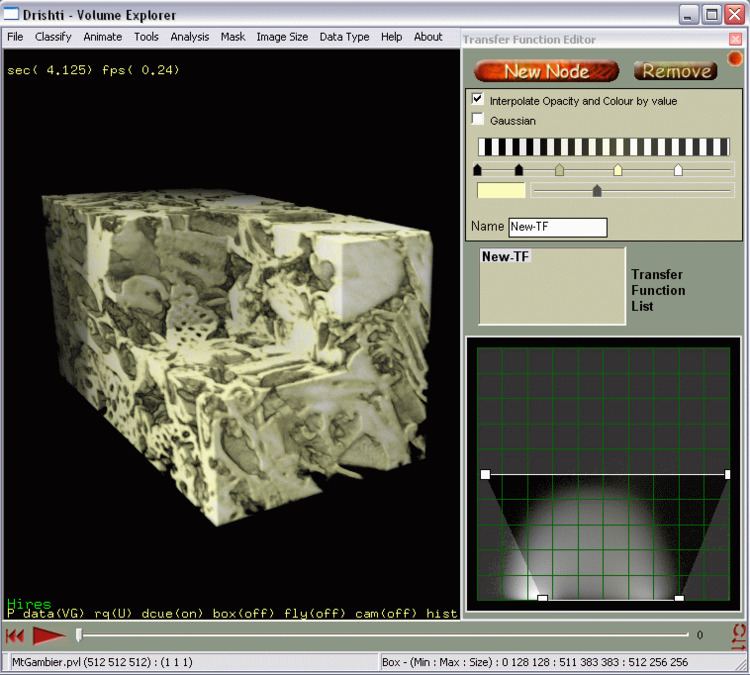Original author(s) Stable release 2.0 | Developer(s) ANU Vizlab | |
 | ||
Operating system Type Scientific visualization, Interactive visualization License GNU General Public License Version 2 | ||
Drishti (from Sanskrit दृष्टि dr̥ṣţi, meaning "vision" or "insight") is a multi-platform, open-source volume-exploration and presentation tool. Written for visualizing tomography data, electron-microscopy data and the like, it aims to ease understanding of data sets and to assist with conveying that understanding to the research community or to lay persons. From the website:
"The central idea about Drishti is that the scientists should be able to use it for exploring volumetric datasets as well as use it in presentations."
The Commonwealth Scientific and Industrial Research Organisation (CSIRO) in Australia has used Drishti for a number of purposes, such as volumetric visualisation of various computer-tomography datasets. The Australian National University (ANU) Physics Department, along with the author of the software, has used it for (amongst other things) the analysis of immiscible flow in massive 3D systems. Further uses were presented at the APAC '07.
Among other software, Drishti uses Qt for the GUI widgets and OpenGL Extension Wrangler Library (GLEW).
Drishti provides a number of features that would otherwise require several proprietary volume visualisation programs or that are simply not available together in other software:
